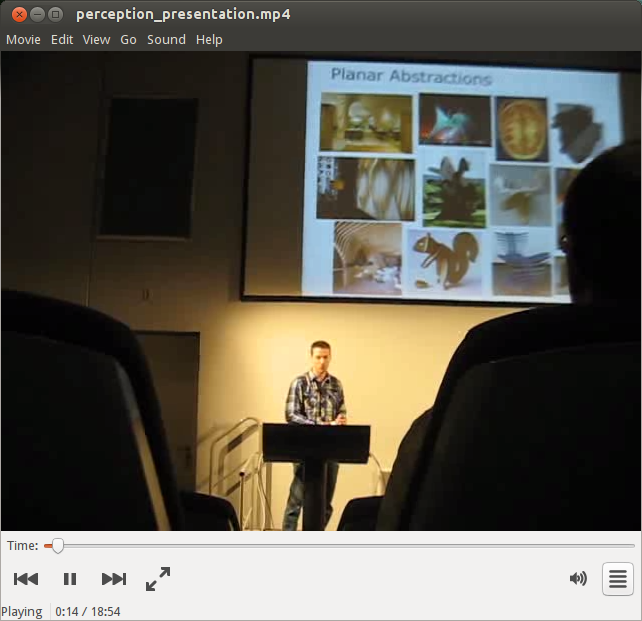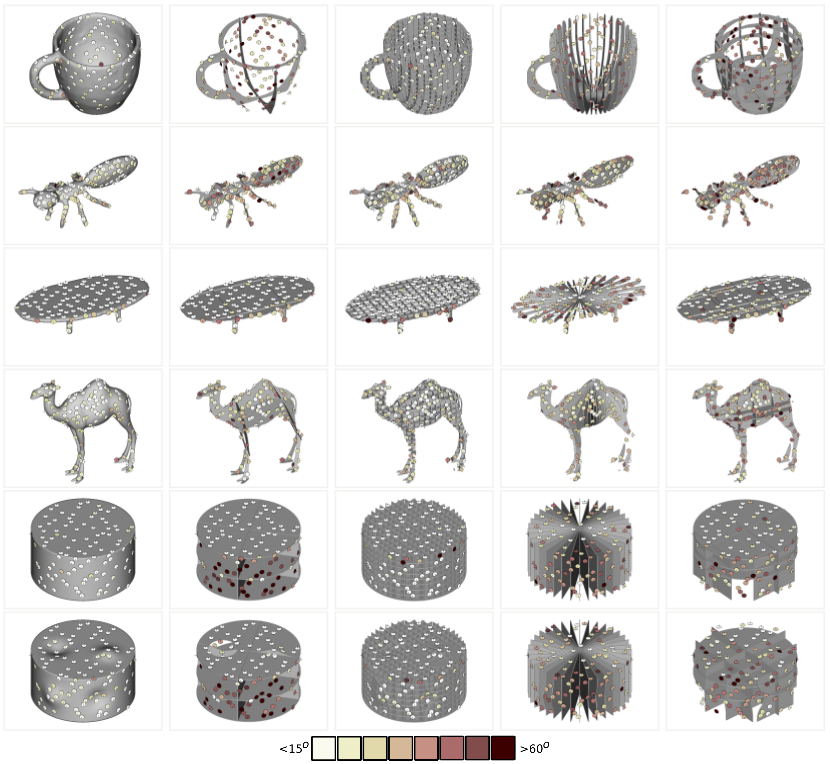

Download:
Paper (PDF, 9.5 MB)
Slides (PDF, 7.5 MB)
Processed Study Data (plaintext matrix format, 500 kB)
Raw Mechanical Turk Data (CSV format, 2.4 MB)
Software Source Code (C++, uses Qt/OpenGL, depends on models, 100 kB)
Models (OFF format, 15 MB)
Abstract:
Various algorithms have been proposed to create planar abstractions of 3D models, but there has been no systematic effort to evaluate the effectiveness of such abstractions in terms of perception of the abstracted surfaces. In this work, we perform a large crowd-sourced study involving approximately 70k samples to evaluate how well users can orient gauges on planar abstractions of commonly occurring models. We test four styles of planar abstractions against ground truth surface representations, and analyze the data to discover a wide variety of correlations between task error and measurements relating to surface-specific properties such as curvature, local thickness and medial axis distance, and abstraction-specific properties. We use these discovered correlations to create linear models to predict error in surface understanding at a given point, for both surface representations and planar abstractions. Our predictive models reveal the geometric causes most responsible for error, and we demonstrate their potential use to build upon existing planar abstraction techniques in order to improve perception of the abstracted surface.
SAP 2013 Presentation Video:
Video (MPEG-4, 80 MB)

Additional Information:
See "readme.txt" included with the processed study data zip file for more information.
Note that the software can also be used to interactively view the models and to load and display the obtained study data (this requires changing some values in the GLWidget constructor, and the hashed_id value, which specifies the condition to load, within the GLWidget::SetupStudy method).
Error visualizations for fixed view task:

Error visualizations for rotated view task:
